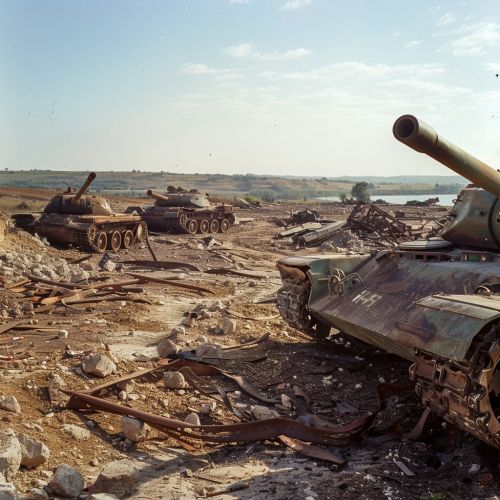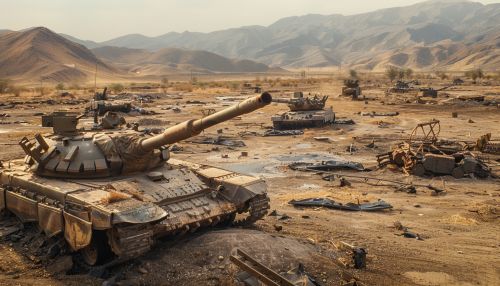Battle of Kursk
Background
The Battle of Kursk was a significant confrontation during World War II, between the Axis Powers and the Allies. It took place from July to August 1943 around the city of Kursk in the Soviet Union. This battle is recognized for the extensive deployment of armoured warfare and its significance in the larger context of the Eastern Front.
Prelude to the Battle
The strategic situation on the Eastern Front had changed dramatically by the summer of 1943. The Red Army had successfully repelled the German Operation Barbarossa and had begun to regain lost territory. The German Wehrmacht, however, was not ready to concede defeat and planned a major offensive to regain the initiative.


Operation Citadel
The German offensive, codenamed Operation Citadel, aimed to encircle and destroy the Soviet forces in the Kursk salient. The operation was marked by fierce fighting, with both sides deploying large numbers of tanks and artillery. The Germans initially made some gains but were eventually halted by the Soviet defenses.
Soviet Counteroffensive
In response to Operation Citadel, the Soviets launched a series of counteroffensives, pushing the Germans back and inflicting heavy losses. The counteroffensives marked a turning point in the battle, with the Soviets gaining the upper hand.
Aftermath and Significance
The Battle of Kursk ended in a decisive Soviet victory, marking a turning point in World War II. The defeat significantly weakened the German Wehrmacht, and the Soviets maintained the initiative for the rest of the war. The battle is also notable for the extensive use of armoured warfare and the high number of casualties on both sides.
